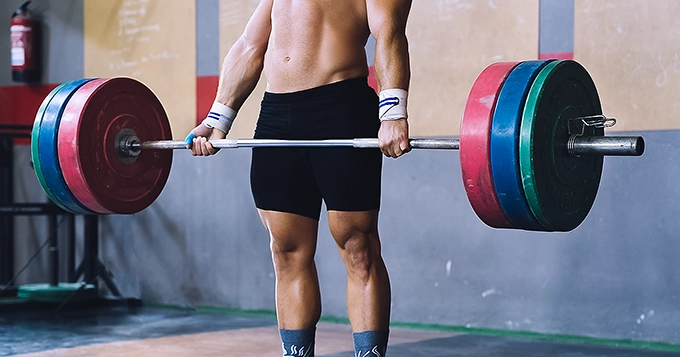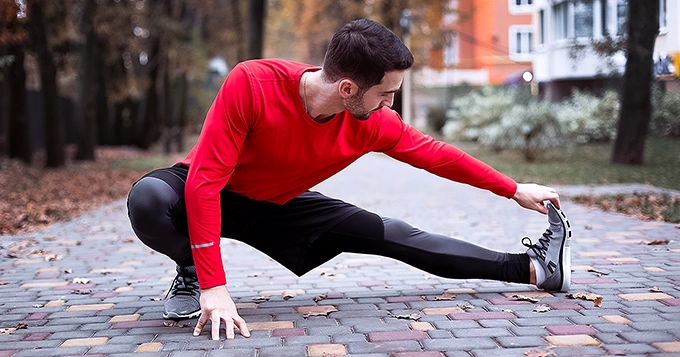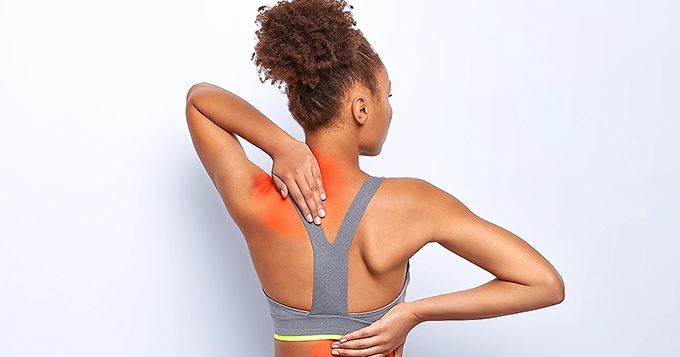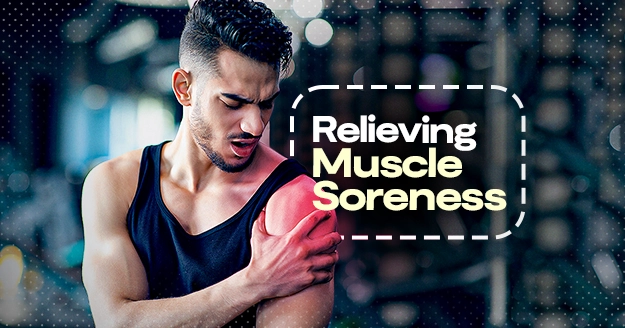You’re pumped up to start or continue your fitness plan again. But after a day or two of working out, your muscles are already aching and sore. And sometimes, it may lead you to quit. Is this cycle familiar?
It’s common to feel muscle soreness after starting a new workout routine or doing an intense workout. Although it can be uncomfortable, it doesn’t have to stop you from continuing your routine. Instead of immediately turning to over-the-counter pain relievers, you might want to try some proven muscle soreness relief methods.
-
Hydration
Many people forget that staying hydrated is important for muscle recovery. Water helps transport nutrients to your muscles and gets rid of waste products. This is crucial for healing and can prevent muscle cramps. You should drink at least eight glasses of water daily, especially if you’re physically active. This will help with muscle recovery and keep you hydrated.
-
Hot And Cold Therapy
Using ice or a cold pack/compress can quickly ease muscle pain by numbing the area and reducing inflammation. Heat, such as a warm bath or heating pad, can help loosen tight muscles and improve blood flow. Alternating between cold and heat therapy can be especially beneficial in soothing soreness.
-
Stretching
One of the great muscle soreness relief methods is stretching.
Doing gentle stretches is a great way to alleviate muscle soreness. Concentrate on dynamic stretches that involve moving through a controlled full range of motion. Stretching increases blood flow to the muscles, which improves flexibility and lessens stiffness. However, it’s best to avoid intense static stretches right after working out, as they could cause further strain. Instead, save static stretches for your cool-down routine.
-
Nutrition
What you eat can significantly impact how quickly your muscles recover. Ensure you consume a balanced diet rich in protein, as it’s crucial for muscle repair. Additionally, foods high in antioxidants, such as fruits and vegetables, can help reduce inflammation.
Omega-3 fatty acids, found in flaxseeds and fish, possess anti-inflammatory properties that may aid in relieving muscle soreness. Incorporating these foods into your diet could be beneficial for muscle recovery.
-
Essential Oils
Take advantage of the benefits of essential oils for muscle pain relief. These oils are calming and anti-inflammatory. Lavender, peppermint, and eucalyptus oils can be mixed with a carrier oil and applied topically to sore areas or added to a warm bath. The aromatherapeutic benefits of these oils can promote relaxation, which can contribute to a more effective recovery process.
-
Compression Gear
Compression gear, such as sleeves or socks, applies gentle pressure to muscles, which can promote blood flow and reduce swelling. Wearing compression gear during and after workouts may aid in muscle recovery by minimizing muscle oscillation and supporting the natural healing process. Investing in high-quality compression wear could enhance your post-exercise recovery routine.
-
Massage Therapy
For a more hands-on approach to muscle recovery and muscle ache relief, massage therapy can be highly beneficial. Professional massages from a trained therapist can target specific muscle groups, improve blood circulation, and release tension.
If you’re unable to access professional massage services, self-massage tools such as massage balls, handheld massagers, or foam rollers can provide a DIY solution for targeted relief. These tools can help alleviate tension and promote better blood flow in the muscles.
-
Rest and Recovery
Rest is a vital part of any successful fitness routine. While pushing yourself is admirable, it’s equally important to give your body time to recover. Prioritizing sleep and rest days between intense workouts allows your muscles to repair and strengthen. Overtraining can result in prolonged soreness and increase the risk of injury, so it’s crucial to listen to your body and schedule those much-needed rest days.
Why do your muscles get sore after exercising?
Muscle pain after exercise is also known as delayed-onset muscle soreness (DOMS). It is a natural response to physical stress. It can affect anyone, including experienced athletes, but it’s particularly common in people who are new to exercise or have taken a long break.
New, intense, or repetitive exercise can cause small tears in your muscle fibers as well as metabolite build-up, which triggers inflammation as your muscles recover and adapt to the unfamiliar stress. This process helps build muscle mass, but researchers believe that this type of inflammation is responsible for post-workout muscle aches.
Should you work out with sore muscles?
Deciding whether or not to exercise with sore muscles is mainly based on your symptoms. Delayed Onset Muscle Soreness (DOMS) is usually not a cause for concern, and you may not need to avoid exercise if you have minor pains and aches. Instead, try cross-training while your muscles heal.
Cross-training involves combining different exercise styles, such as aerobics, strength training, and flexibility, in one fitness plan. This allows you to keep training while sore or injured. For example, if arms are sore after your new upper-body resistance workout, try cross-training with a lower-body session.
Alternatively, you can opt for gentler, low-impact activities like yoga or tai chi until the aches and pains subside.
Experts recommend waiting 2-3 days before targeting the same muscle group again. However, severe symptoms, such as extreme muscle soreness, might require medical attention.
Conclusion
Combining traditional recovery methods with innovative techniques like foam rolling, essential oils, compression gear, and massage therapy creates a holistic approach to relieving muscle soreness. Experiment with these methods and discover what works best for your body and incorporate them into your routine for a comprehensive recovery strategy. Remember, taking care of your muscles is an essential part of achieving your fitness goals and maintaining a sustainable, active lifestyle.










